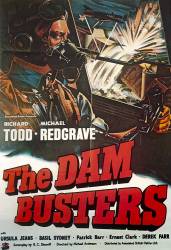
Question: Isn't Gibson (Richard Todd) shown wearing a VC ribbon on his dress tunic? I thought he was awarded this for the raid itself.
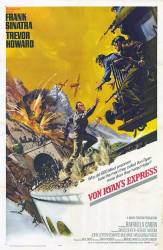
Question: Why didn't the prisoners just walk through the tunnel to Switzerland on the other side?
Answer: The majority of prisoners were heading towards Switzerland through the tunnel, only a few prisoners with weapons were acting as a rear guard to hold off the German troops chasing them and buy the prisoners time to escape.
All the prisoners were on the train. I've contended before, they didn't need to fix the track. Just leave the train on the bridge and go straight through the tunnel. That route HAD to be shorter than going around on the walkway, and they would have had a much larger head start than waiting to fix the track.
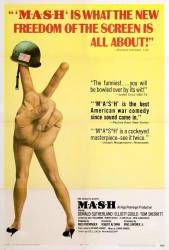
Question: What's the difference between an enlisted person and an officer?
Answer: An officer is a person who has had special training (in college ROTC, or in OTS, called 90 days wonders) for command, tactics, military law and the like, after which they are Commissioned. They are basically management. An enlisted person is someone who has gone through basic military training, but does not have command responsibilities or authority. Basically labor. This gets a little confusing when enlisted personnel can rise in rank to become a Non-Commissioned officer, often called the backbone of the Service. But the highest ranked enlisted person does not out-rank, and has to salute, the lowest ranked officer.
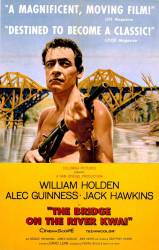
Question: When the commando teams drops their gear did the parachute fail to open, or could the equipment survive a drop from a plane at that height?
Answer: Depending on how it was packed most likely.
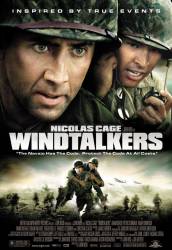
Question: I can understand why they would use code when talking about positions, objectives, etc. but when they call in the air strike from the battleships, what's the point of using code? Also, later in the film, when the same situation arises, they don't use the code. Seemed like it was just a silly way to introduce the whole premise for the movie.
Answer: The point of using the Navajo code to call in air strikes was to encrypt what the Marines were requesting without the Japanese being able to decipher what was said. This is critical because during the Battle of Saipan, the Japanese made extensive use of caves and reinforced earthworks to support their artillery positions and machine gun nests. The delay between requesting artillery support and the act of carrying it out allowed the Japanese to withdraw their infantry to relative safety before the fire mission could commence. By using PVT Yahzee and PVT Whitehouse, they were able to circumvent this and request attacks without the Japanese knowing what was coming. The only time Yahzee does not use the code is when he uses the Japanese radio to call off the artillery strikes that were falling short and hitting Marines. This situation required immediate attention and it would not have been appropriate to use the code.
Answer: They used the code to call in the strike so the Germans couldn't get the U.S. to bomb their own troops. I don't know why it wasn't used in the other situation.
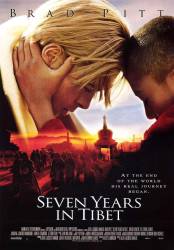
Question: Is David Thewlis still banned from entering the China for his role in this movie? I know that Brad Pitt's ban was lifted in 2014, but was Thewlis' ban lifted too?
Answer: Brad Pitt's ban was lifted in 2014, but David Thewlis is still banned from entering China to this day.

Question: Where was the civil war battle fought nearest Madison, Wisconsin?
Answer: The nearest one I can find listed was at Kirksville in northern Missouri.
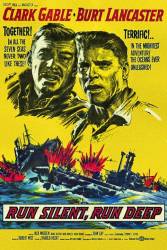
Question: At the beginning what was wrong with the young sailor drawing number 7 in the money draw?
Answer: Sailors are very superstitious, they considered it a bad omen. Number 7 is an area of the ocean where most ships and subs have gone down.
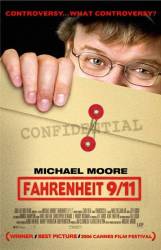
Question: What was that phone number that they listed of that guy that lied about having an 800 number?
Chosen answer: (202) 225-2536. It's not that major a revelation in the film, as his number's publicly available on a variety of sites.
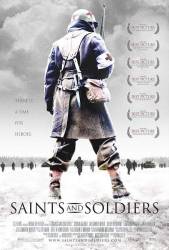
Question: We all assume, as I did when watching the movie, that the opening scene really was intended to be the Malmedy massacre. Could it have been that they were just hinting towards that, and that the opening scene (with the array of mixed Wehrmacht and SS, 101st Airborne and other which is historically not matching Malmedy) was simply another incident? Did the director ever intend to create a grossly false Malmedy scene? There were quite a lot more atrocities in that area and time, with executions of prisoners by both sides.
Answer: The massacre was intended to be Malmedy. Artistic license was taken with the participants but what happened is a possible version of events that caused the massacre.
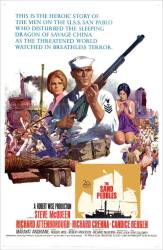
Question: Why was the movie called "The Sand Pebbles?
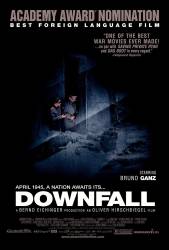
Question: Why is this movie parodied online?
Answer: The "Hitler in the bunker" scene is iconic for historical reasons, being something most people understand the significance of. Being subtitled in the film means it's very easy for people to keep the original excellent acting while simply replacing the words onscreen to change the context entirely. It also ends up being a bit self-reinforcing, once people get wind of it as a "template", they then start getting their own ideas. And there's the arguable "Streisand Effect", when the film company issued a wave of copyright takedowns in 2010, a lot of people "retaliated" by making and uploading even more.
Answer: Presumably, due to its popularity.
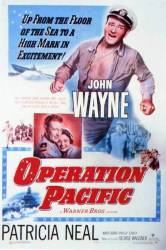
Question: Why do they look into the scope soon as it starts to rise? The view part would still be in the water.
Answer: A good submarine skipper ensure he always has a low periscope profile, as it's easily seen when out of the water too much. That's why he looks through the scope even while underwater, so the scope is only just out of the water.
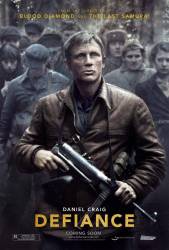
Question: When Tuvia executed Arkady for his defiant mutiny, why did Tuvia have to turn his body to pull his weapon, instead of just drawing his gun and shooting him dead on the spot right there?
Answer: For two reasons: one, to let him think Tuvia was going and let down Arkady's defenses; and second, Tuvia was quickly and truly debating whether or not to shoot.

Question: When Michael & Hannah begin their affair Michael is 15 years old - in the courtroom scenes, the judge states that Hannah is now 43 years old and also states that the events at Auschwitz took place 20 years prior, which would've made her 23 at the time of Auschwitz and possibly around 23 when she left Michael - meaning that when they had the affair she was only about 7 years his senior. Therefore, when she's 43 in court, that makes him 36 years old when he's at university watching the court proceedings - but surely that's too old for what the film is trying to portray? It seems like he's in his 20's when he's at uni. I don't get it. Surely they couldn't have gotten their timelines so incorrect?
Answer: It is confusing in the movie because it seems like she went from the ticket taking job to the SS job after refusing the office job promotion, which would require literacy. When actually her SS job was prior to the ticket taker job. Was muddled in the movie.
Chosen answer: Where do you figure she was 23 when she left Michael? She had been working at the dispatch office for several years before she meet Michael (as indicated in the scene where her boss promotes her for her long service) -- so this is years after she was at Auschwitz. So she was in her mid-30s when she began the one-year affair with 15-year-old Michael. Then, while at university about 8 years later (when she is in her early 40s), he attends her trial. The timeline is fine.
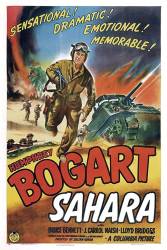
Question: Serious spoiler alert: these questions summarise the entire film. During the Second World War Sgt Joe Gunn (Humphrey Bogart) and nine allied soldiers (plus one German and one Italian captive) are crossing the North African Desert. They discover a well, but this has nearly dried up and only provides a small trickle of water, barely enough to keep them alive. They are besieged by over 100 Germans. Since the Germans have no water at all they surrender to Joe Gunn. At this point a stray shell lands in the well. The resulting explosion brings hundreds of gallons of water bubbling up, more than enough for Joe Gunn's company and all the Germans. Two questions. 1. Could a well in the Sahara dry up until it only gave a small trickle of water? 2. Could an explosion really open a water supply like this?
Answer: Thank you for that! I first saw Sahara on television when I was eleven, with my mother, father and younger brother. When we saw the shell explode in the well to re-open the water supply, we all dismissed this as Hollywood hokum. But sometimes it is amusing to be proved wrong. You put a smile on my face when you informed me, and quite convincingly too, that the well really could have dried up but then opened up again.
Answer: 1. Yes it could, as water flows into the well, it could easily bring sediment and other bits of small debris and eventually block the flow of water resulting in only a trickle. 2. Again, yes. If the explosion weakens the surrounding walls holding the water back, the pressure of the water could easily rupture through the walls and result in the flooding mentioned.
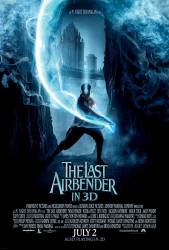
Question: Was there any reason given as to why many of the names (Aang, Sokka, Iroh, etc.) and the term "Agni-Kai" are pronounced differently than in the television series?
Answer: The TV show Americanized the pronunciations whereas the movie said them correctly.
The show is American, so with original characters you're allowed to say them how you want.
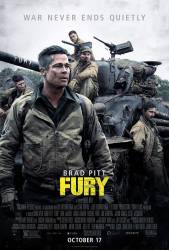
Question: Why did Gordo bring up the horse thing at breakfast?
Answer: Gordo was making a point to Norman that the crew of the "Fury" had seen some horrible things during the Battle of the Falaise Pocket. After wiping out an entire German army there, they were tasked with putting wounded horses out of their misery. The point was that Norman was not there, and did not experience what they had, so Norman could not judge the tank crew's actions.
Gordo brought up the horse thing because him and the other (original) crew members were not happy with Don and Norman enjoying a nice, quiet meal without them. He even say's "You weren't there" meaning Don sharing this with Norman when he hadn't yet been through much war time like all of them had, together. They also say "We weren't invited", "Why weren't we invited." The horse story was to get at Don for not inviting them and sharing it only with Norman.
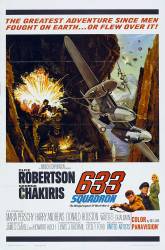

Answer: I think Gibson is shown wearing the ribbons (and rosettes) of the Distinguished Service Order and Bar, and Distinguished Flying Cross. He was awarded these medals before the Dam Busters raid. In black and white, the ribbon for the VC with its miniature cross can look similar to the DSO with a rosette for a second award.